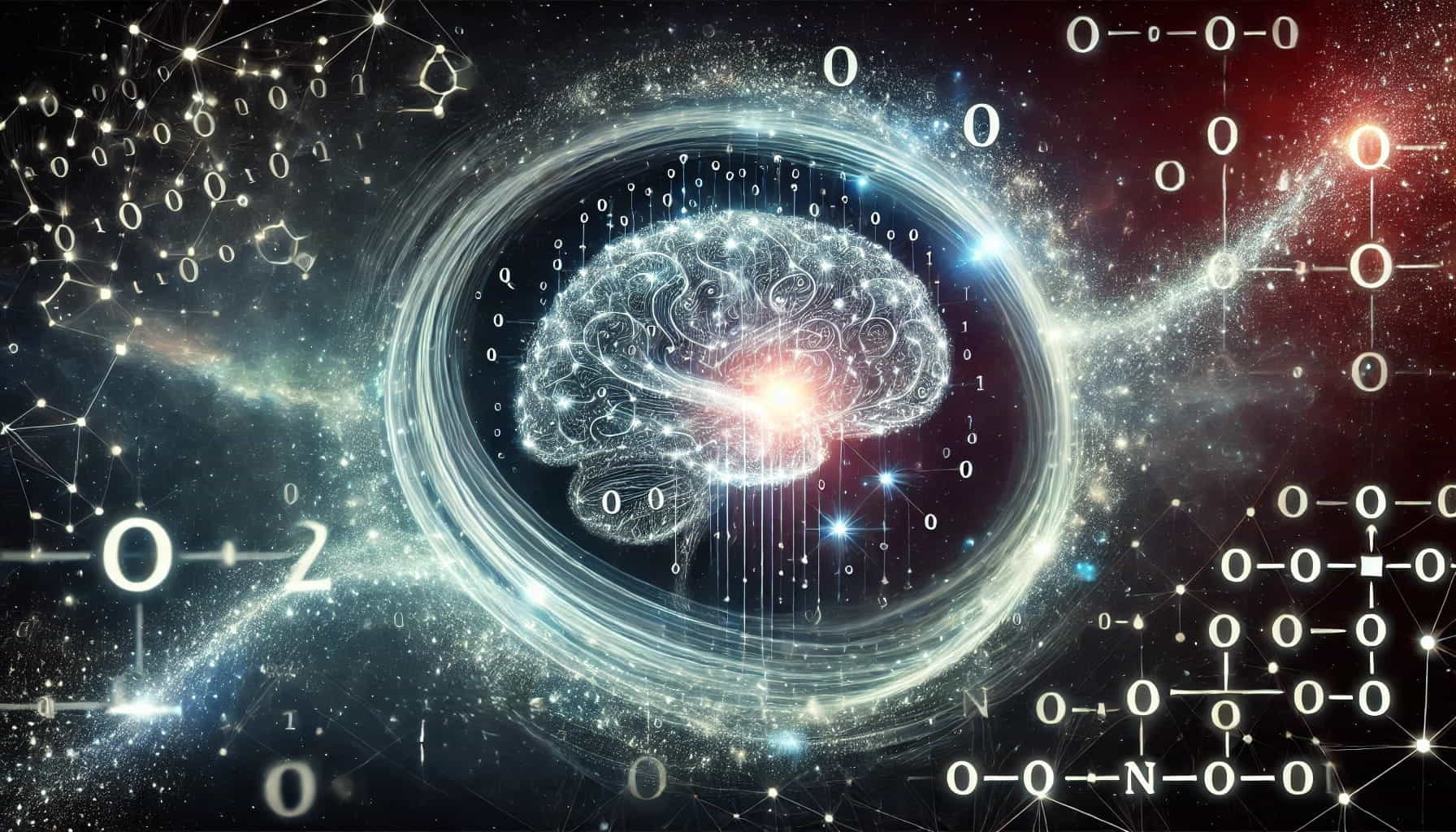Predictionism: A Foundational Derivation of Logic and Computation from Cogito
Abstract
Predictionism establishes a foundation for classical logic and universal computation by grounding them in the epistemic certainty of Descartes’ cogito ergo sum. Traditional approaches to classical logic often assume the principle of bivalence (every proposition is strictly true or false) axiomatically, leaving its deeper justification unexplored. In contrast, Predictionism demonstrates that binary logic is not an arbitrary system, but rather emerges necessarily from the very structure of self-verifying thought. By formalizing the Cogito – the self-evident "I think" – as a foundational instance of a cyclical predictive and verification process, we reveal how the inherent binary nature of verification directly establishes the principle of bivalence. This framework then allows us to derive the fundamental Boolean operations (NOT, AND, OR) and demonstrate their sufficiency for universal (Turing-complete) computation. By connecting the self-evident certainty of the Cogito to the core mechanisms of logic and computation, Predictionism offers an interdisciplinary framework that robustly grounds these fundamental systems in the nature of consciousness itself.
1. Introduction
Classical logic underpins modern mathematics, philosophy, and computer science, yet its fundamental principle of bivalence—that propositions must be either true or false—is typically accepted without deeper justification. Predictionism reveals that this binary truth structure is not arbitrary, but emerges directly from the nature of consciousness itself.
When Descartes attempted to doubt everything, he arrived at a singular certainty: the act of doubting itself confirmed the presence of thinking, revealing a fundamentally binary verification process—the proposition "I exist" must be true (as the very act of doubting demonstrates existence) and cannot possibly be false (as attempting to verify "I do not exist" is self-contradictory)—thus establishing that consciousness, at the most fundamental level, operates through a true/false verification structure that provides the foundation of bivalence in logic.
By formalizing this insight into a cyclical structure of doubt → prediction → verification → renewed doubt, we illustrate how bivalent logic naturally emerges. We then extend this to show how Boolean operations (NOT, AND, OR) and, ultimately, Turing-complete computation follow from such a binary verification framework.
The paper’s main contributions are:
- Epistemological Justification of Bivalence: Demonstrates how the principle of bivalence is grounded in the self-verifying loop of consciousness, rather than simply taken as an axiom.
- Formal Specification of the Predictive Cycle: Provides mathematical definitions for the state space, prediction function, verification function, and the cyclical doubt function. These clarify how self-reflection enforces a binary outcome.
- Derivation of Boolean Operations and Computation: Shows that the core Boolean operators arise from different facets of the predictive cycle, and that universal computation follows from their functional completeness.

Universe 00110000
2. The Cyclical Predictive Structure of Consciousness
2.1 The Fundamental Predictive Loop and the Cogito
We begin by modeling consciousness as an iterative cycle:
- Doubt: The mind questions any presumed certainty.
- Prediction: The mind projects a state or outcome.
- Verification: The mind confirms or disconfirms this prediction through direct experience or introspection.
- Renewed Doubt: The cycle restarts, questioning the result of verification.
In Descartes’ cogito, ergo sum, the verification step locks in a unique way: the act of denying or doubting one’s own thinking only reaffirms that one is, indeed, thinking. Thus, the verification cannot be neutral or partial; it is inevitably confirmed as true. This special instance of the predictive cycle embodies the fundamental certainty: “I think, therefore I am.”
2.2 Formal Definitions and Notation
To bring mathematical clarity to this cyclical model, we define:
- State Space (ℛ): The set of all possible internal states of the system (the mind).
- Predicted State Space (ℛ′): A subset of ℛ capturing states that the system explicitly anticipates (i.e., outcomes under consideration). Formally, ℛ′ ⊆ ℛ.
- Predictive Function (P): A total function P: ℛ → ℛ′. For each state r, P(r) represents the prediction about the next or anticipated state.
- Verification Function (V): A mapping V: ℛ → {0,1}. For each state r, V(r)=1 if the prediction made in or about r is verified, and V(r)=0 otherwise.
- Doubt Function (D): A mapping D: ℛ → ℛ that moves the system from a (verified) state back to a state of uncertainty, thus restarting the cycle.
We often write δ(r) in place of V(r). This is simply a notational convenience to emphasize the binary output, δ(r) ∈ {0,1}.
2.3 Binary Verification in the Cogito
Theorem 1 (Binary Verification in the Cogito):
In the Cogito, the act of self-awareness necessarily produces a binary verification outcome, offering a
non-arbitrary grounding for classical bivalence.
- Definition of the Cogito State: Let r₀ ∈ ℛ represent the state of direct self-awareness. In this state, the system makes the prediction P(r₀) = "I am thinking."
-
Possible Verification Values: V(r₀) ∈ {0,1}.
- Case 1: V(r₀)=1. This outcome verifies the proposition "I am thinking," which directly implies that "I exist" is true.
- Case 2: V(r₀)=0. Denying the act of thinking is self-refuting because any attempt to verify “not thinking” presupposes the very act of thought that is being denied. Thus, this case is impossible.
- Conclusion: The only consistent outcome is V(r₀)=1. This binary check confirms that the proposition "I exist" is true and "I do not exist" is false, thereby aligning with classical bivalence.

Universe 00110000
3. Derivation of Boolean Logic and Turing-Completeness
3.1 The Emergence of Boolean Operations from the Predictive Loop
We now show how the canonical Boolean operations (NOT, AND, OR) arise from the fundamental verification scheme δ(r) ∈ {0,1}. By extension, all of classical Boolean algebra can be generated.
Theorem 2 (Boolean Operations from Binary Verification):
Given a system where any state r has a binary verification outcome δ(r), the essential logical operations (NOT, AND, OR) follow naturally from distinct aspects of the cyclical predictive process.
Proof (Sketch):
-
Negation (NOT) from Distinction:
For any predicate S defined on states in ℛ, we must be able to distinguish S from ¬S. If δ(S(r)) = 1, then δ(¬S(r)) = 0, and vice versa. Formally:
δ(¬S(r)) = 1 - δ(S(r))This basic ability to differentiate between a statement and its negation underlies the idea of logical NOT.
-
Conjunction (AND) from Sequential Conditions:
Consider two state predicates S₁ and S₂. Moving from a state satisfying S₁ to a subsequent state that also satisfies S₂ requires both conditions to hold. If we introduce a transition predicate T(S₁, S₂) that indicates the system can move from S₁ to S₂, then:
δ(S₁(r)) ∧ δ(T(S₁(r), S₂(r))) = min(δ(S₁(r)), δ(T(S₁(r), S₂(r))))This expresses the logical AND operation: both S₁ and T must evaluate to 1 for the system to move on.
-
Disjunction (OR) from Predictive Branching:
When predicting multiple possible outcomes (e.g. V₁, V₂, …, Vₙ), at least one might occur. The system effectively encodes an OR among these outcomes:
δ(V₁(r)) ∨ δ(V₂(r)) ∨ … ∨ δ(Vₙ(r)) = max(δ(V₁(r)), δ(V₂(r)), …, δ(Vₙ(r)))Thus, logical OR arises from branching anticipations of possible verifications.
These three operations (NOT, AND, OR) are well-known to be functionally complete: they can generate all Boolean functions.
3.2 From Boolean Logic to Universal Computation
Theorem 3 (Universal Computation from Binary Verification):
The progression from Boolean algebra to universal computation is well-established in the foundations of computer science. Given that we have established the fundamental Boolean operations (NOT, AND, OR) in binary verification processes inherent in the Cogito, we can efficiently sketch the path to universal computation:
Proof (Sketch):
- Boolean Completeness: As shown in Theorem 2, NOT, AND, OR are sufficient to express any Boolean function. It is a standard result in logic and computer science that functional completeness is a stepping stone to universal machines.
- From Logic Gates to State Machines: Composing these basic Boolean operations allows the construction of digital circuits (or abstract state machines) capable of storing bits, running algorithms, and branching on conditions.
- Turing Completeness: The Church–Turing thesis tells us that if a system can implement arbitrary Boolean functions, has a mechanism for sequence and iteration, and can access sufficient memory, it can simulate a universal Turing machine. Consequently, universal computation emerges from sequences of binary verification events anchored in the Cogito.
In short, the self-verifying structure of consciousness, with its binary checks, naturally supports full classical logic. Once we have classical logic, the path to general computation is well established in theoretical computer science.
4. Conclusion
Predictionism proposes that the basis of classical logic—and therefore of universal computation—lies in the binary verification structure of consciousness. The Cogito, as the paradigmatic example of self-verification, provides a foundational instance where bivalence is enforced and cannot be rationally denied. From this focal point:
- We grounded bivalence in the binary dynamics of doubt and verification, showing that the Cogito’s self-awareness is an unassailable example of how a verification step cannot be other than 0 or 1.
- We demonstrated how Boolean operations (NOT, AND, OR) emerge from structural features of a predictive cycle. This formal correspondence highlights the non-arbitrary nature of classical logic.
- We argued that these foundational logical operations imply Turing-completeness: from basic Boolean gates to full universal computing architectures. The same binary checks that verify "I think, therefore I am" enable the broad world of computation.
This approach suggests that classical logic and computation reflect an inherent feature of self-conscious thought rather than merely convenient human constructs.

